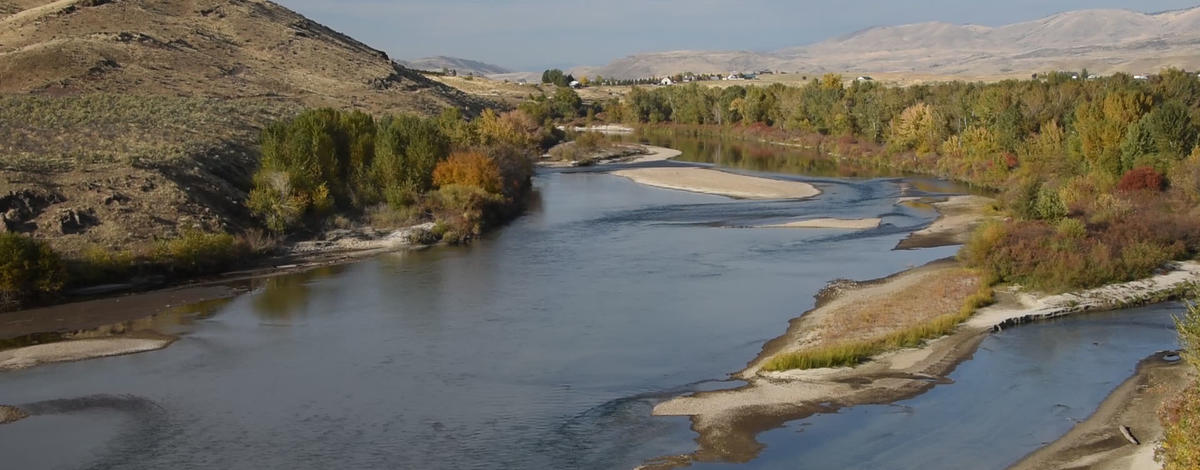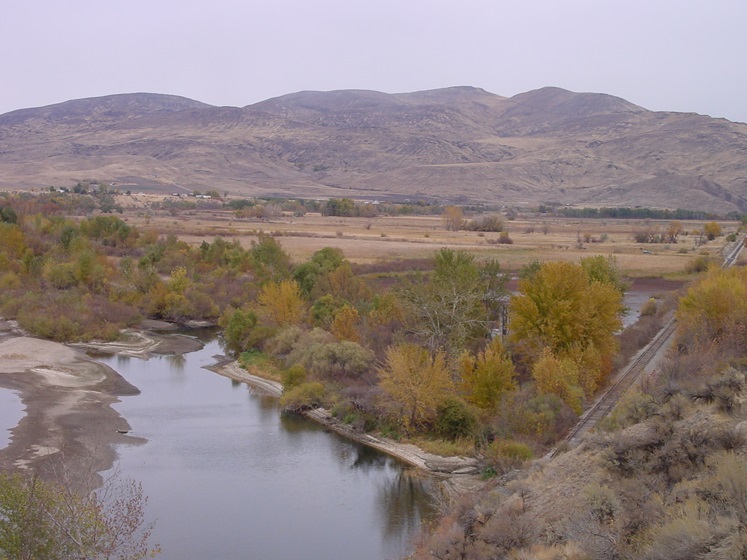The Montour WMA is located on the floodplain of the Payette River. Its lowlands are a complex of cottonwood-willow river bottoms, wetlands and ponds, and agricultural fields adjacent to the Payette River. A large portion of this area lies within the 100-year floodplain and subject to flooding during years of high spring runoff.
The WMA is surrounded by intensive agriculture and ranching. In 1924, the Black Canyon Dam was built to provide irrigation and electricity to the surrounding area.
It was the construction of the dam that led to the creation of the Montour WMA.
After Black Canyon Dam was completed, sediment filled the main streambed at the upper end of the reservoir. Over a span of years, the sediment deposit contributed to flooding in Montour Valley and raised the ground water level. Lawsuits and ongoing flooding led the Bureau of Reclamation (BOR) to purchase 1,100 acres within the 100-year flood plain and create the Montour Flood Project. This property evolved into the Montour WMA, which is cooperatively managed by BOR and Idaho Fish and Game for fish and wildlife purposes.
Today, the WMA has some of the best quality riparian habitat found above the Black Canyon Dam on the Payette River. Much of the riparian area along the Payette River has been altered by channelizing, dike construction, bank repair, tree removal, and agricultural and grazing impacts. In contrast, the narrow band of vegetation on the WMA provides a wide variety of trees, shrubs, forbes, grasses, and wetlands, that together create excellent wildlife habitat.
The primary purpose of the WMA is to create habitat for waterfowl and upland bird production. Five ponds and additional wetland areas have been built to provide food, cover, nesting and resting habitat for waterfowl. The low wetland areas also provide escape and important winter thermal cover for quail, gray partridge, and ring-necked pheasants. As a result, waterfowl and pheasant hunting are two of the main attractions to the Montour WMA.
A wide variety of resident and migrating species use the WMA.
- For a small herd of mule deer, the WMA is an important wintering area.
- Shorebirds use the WMA on their migrations.
- Waterbirds, such as snowy egrets and Virginia rail use it during breeding season.
- Sandhill cranes are common spring migrants.
- Bald eagles are common winter residents and have one nest in the area.
- A nesting colony of great blue herons can be found in the cottonwood trees near the southern WMA boundary.
- Both great horned and western screech owls nest on the WMA.
- Many neotropical birds use the diverse habitats within the WMA for at least some portion of their life cycle.
In the face of expanding human influences in the Montour Valley, the WMA will maintain quality riparian areas into the future.


